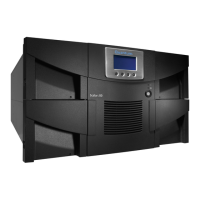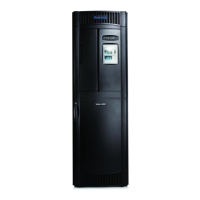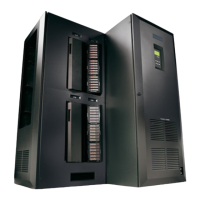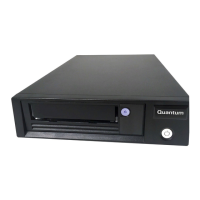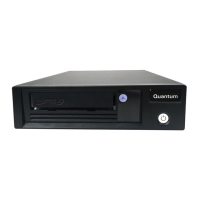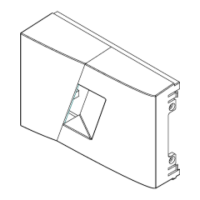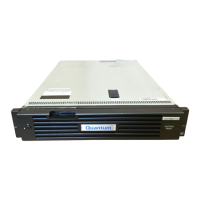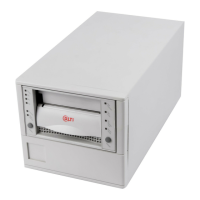Chapter 2 Understanding the User Interface
Menu Trees
Scalar i500 User’s Guide 45
Menu Trees
The following menus organize operations and commands into logical
groupings:
•The
Setup menu consists of commands that administrators can use to
set up and configure various aspects of the library, including
partitions, I/E station slots, cleaning slots, control paths, network
settings, drive settings, users, notifications, date and time, licenses,
FC I/O blades, library registration, and e-mail.
•The
Operations menu consists of commands that enable users to
change the library’s mode of operations, import and export
cartridges, load and unload tape drives, move media, perform
diagnostics, and log off. Administrators can also access commands to
lock or unlock the I/E station and to shut the library down.
•The
Tools menu consists of commands that you can use to maintain
your library, such as viewing RAS Tickets, generating diagnostic
logs, identifying drives, configuring the internal network, saving and
restoring the library configuration, setting system and security
settings, and updating firmware.
•The
Reports menu (Web client only) consists of summaries of library
information.
A hidden
Service menu is available to service users with the appropriate
login information.
The menus vary somewhat between the Web client and operator panel
user interfaces. Administrators have access to all menu commands; users
with user privileges have more limited access.
Table 1
lists the Web client menus. Some menu commands are available
only to administrators.
I/O blade menu items are available for libraries that contain I/O blades.
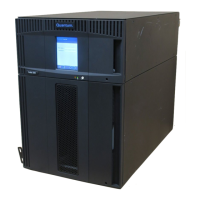
